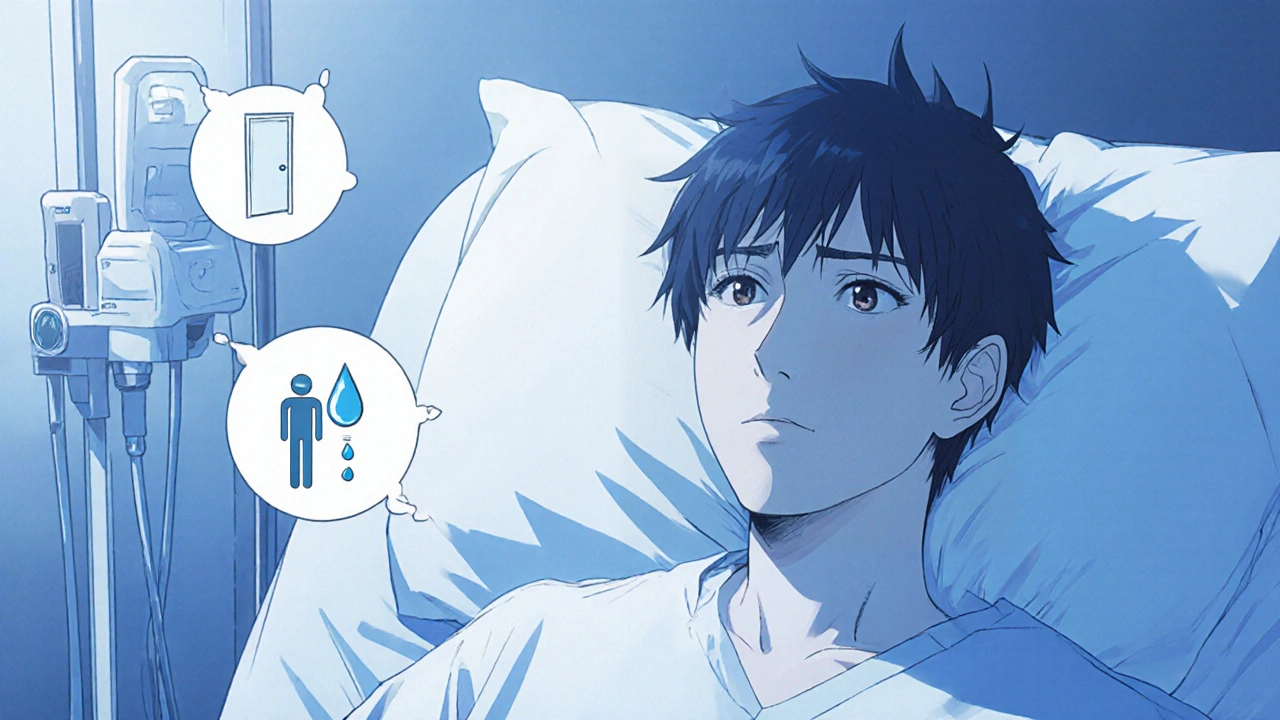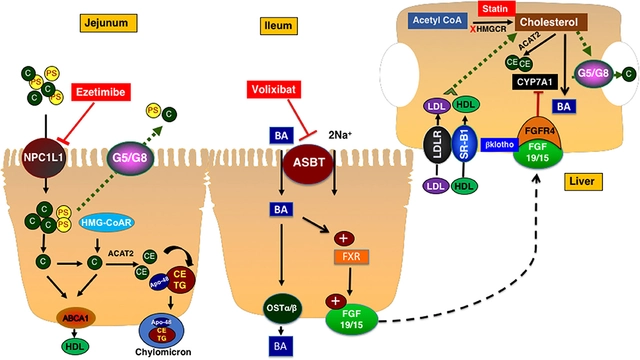Chemotherapy Diarrhea Severity Calculator
Assess Your Diarrhea Severity
Your Diarrhea Assessment
About one‑in‑five people receiving cancer treatment will experience diarrhea that disrupts life, treatment schedules, and nutritional status. If you or a loved one are fighting cancer, learning how to tame this side effect can make a huge difference in comfort and outcomes.
What is Chemotherapy‑Induced Diarrhea?
When undergoing cancer treatment, Chemotherapy‑induced diarrhea is a common side effect that can significantly disrupt daily life.
It occurs when cytotoxic drugs damage the lining of the intestines, speeding up transit time and reducing the gut’s ability to absorb water and electrolytes. The result is watery stools, urgency, and sometimes cramping.
Why Does It Happen? The Usual Suspects
Not all chemo agents trigger diarrhea, but a handful are notorious:
- 5‑Fluorouracil - often used for colorectal and breast cancers.
- Irinotecan - a mainstay in colorectal regimens.
- High‑dose Methotrexate - especially in leukemia protocols.
These drugs irritate the mucosal cells, alter gut flora, and sometimes stimulate secretory pathways, all of which tip the balance toward loose stools.
How Severe Is It? Grading the Side Effect
Oncologists use the Common Terminology Criteria for Adverse Events (CTCAE) to rank diarrhea from Grade 1 (mild) to Grade 4 (life‑threatening). Knowing the grade helps you decide when home measures are enough and when you need to call the clinic.
| Grade | Description | Typical Action |
|---|---|---|
| 1 | Increase of < 4 stools per day over baseline | Dietary tweaks, OTC meds |
| 2 | Increase of 4‑6 stools per day | Prescription anti‑diarrheal, monitor hydration |
| 3 | ≥7 stools per day, limiting self‑care | Hospitalization, IV fluids, IV anti‑diarrheal |
| 4 | Life‑threatening consequences | Urgent medical care |
First‑Line Actions: What You Can Do Right Now
Before reaching for any medication, focus on three core pillars: hydration, diet, and over‑the‑counter (OTC) support.
- Hydration: Aim for at least 2‑3 liters of clear fluids daily. Oral rehydration solutions (ORS) packed with sodium and potassium are ideal.
- Electrolyte balance: A cup of low‑sugar sports drink or a homemade ORS (1 L water + 6 g sugar + 0.5 g salt) helps replace lost salts.
- Gentle diet: Stick to the BRAT regimen (Bananas, Rice, Applesauce, Toast) for the first 24‑48 hours, then slowly re‑introduce bland proteins like boiled chicken.
Medication Toolbox: Choosing the Right Anti‑Diarrheal
When lifestyle steps aren’t enough, pharmacologic options step in. Below is a quick comparison of the three most frequently prescribed agents.
| Drug | Typical Dose | Onset | Key Considerations |
|---|---|---|---|
| Loperamide | 2 mg after first loose stool, then 2 mg after each subsequent stool (max 16 mg/24 h) | 30‑60 min | Safe for most patients; avoid if febrile neutropenia present. |
| Diphenoxylate/Atropine | 5 mg (with 0.025 mg atropine) 4‑6 h as needed (max 30 mg/24 h) | 45‑90 min | Stronger opioid effect; use cautiously in patients with CNS disorders. |
| Octreotide (IV/SC) | 50‑100 µg subcutaneously every 8 h (dose may increase) | Immediate (IV) to 2 h (SC) | Reserved for refractory cases; may cause gallstones with long‑term use. |
Start with loperamide for most Grade 1‑2 cases. If symptoms persist after 48 hours, step up to diphenoxylate or discuss octreotide with your oncologist.

Gut‑Friendly Foods and Lifestyle Tweaks
- Low‑fiber, low‑fat meals reduce stool volume.
- Probiotic‑rich foods (plain yogurt, kefir) can help restore healthy bacteria-just avoid added sugars.
- Avoid caffeine, alcohol, and spicy dishes while diarrhea is active.
- Small, frequent meals are easier on the gut than large plates.
- Gentle exercise (short walks) keeps bowels moving without over‑stimulating them.
Red Flags: When to Call Your Care Team
Even with good home care, some signs demand immediate medical attention:
- Fever ≥38 °C (100.4 °F) with diarrhea-risk of neutropenic enterocolitis.
- Persistent vomiting that prevents fluid intake.
- Signs of severe dehydration: dizziness, rapid heartbeat, dark urine.
- Blood or mucus in stool.
- Diarrhea lasting longer than 7 days despite treatment.
Contact your oncology clinic, go to the emergency department, or call your local health‑care hotline if any of these appear.
Preventive Strategies Before the Next Cycle
Proactive steps can blunt the severity of future episodes:
- Discuss prophylactic loperamide with your oncologist-some protocols recommend a low dose on day 1 of chemo.
- Ask about a pre‑emptive probiotic schedule; evidence from the American Cancer Society suggests starting a month before treatment.
- Keep a hydration journal: track fluid intake and output to catch early imbalances.
- Review all medications for drug‑drug interactions that may worsen gut irritation (e.g., certain antibiotics).
Key Takeaways
- About 20 % of chemo patients develop diarrhea; early action prevents complications.
- Hydration, electrolyte replacement, and a bland diet are the foundation of care.
- Loperamide is first‑line; diphenoxylate and octreotide are backup options for refractory cases.
- Watch for fever, blood, or severe dehydration-these require immediate medical help.
- Proactive measures (prophylactic meds, probiotics, hydration logs) can reduce the frequency and severity of future episodes.
What causes diarrhea during chemotherapy?
Cytotoxic drugs damage the intestinal lining, speed up bowel movements, and disrupt the normal gut bacteria. Common culprits include 5‑Fluorouracil, Irinotecan, and high‑dose Methotrexate.
When should I start taking loperamide?
Begin at the first sign of loose stools-2 mg after the first loose stool, then 2 mg after each subsequent stool, not exceeding 16 mg in 24 hours. If diarrhea persists beyond 48 hours, contact your oncology team.
Can probiotics help?
Yes. Probiotic strains like Lactobacillus rhamnosus GG have shown modest reductions in frequency and severity. Start a probiotic a few weeks before chemo and continue throughout treatment, after checking with your oncologist.
What are the signs of severe dehydration?
Dizziness, rapid heartbeat, low blood pressure, dry mouth, and dark yellow urine are red flags. If you notice any, seek medical care right away.
Is it safe to take anti‑diarrheals if I have a fever?
Generally no. A fever during chemotherapy may indicate infection or neutropenic enterocolitis. Use anti‑diarrheals only after a clinician confirms it’s safe.





Wesley Humble
October 20, 2025 AT 15:49It is noteworthy that early initiation of loperamide, at a dosage of 2 mg after the first loose stool and 2 mg after each subsequent stool (not exceeding 16 mg per 24 h), has been demonstrated to reduce the frequency of chemotherapy‑induced diarrhea in numerous clinical trials 😊. Hydration should be monitored concurrently; a minimum intake of 2–3 L of clear fluids daily is advisable to offset electrolyte loss. The BRAT diet-bananas, rice, applesauce, toast-serves as a gentle substrate for the compromised intestinal mucosa during the initial 24–48 h. Should symptoms persist beyond 48 h despite optimal loperamide therapy, escalation to diphenoxylate‑atropine or consultation regarding octreotide is warranted. Finally, documenting stool frequency in a log can aid the oncology team in grading the severity according to CTCAE criteria.
barnabas jacob
November 1, 2025 AT 05:49One must acknowledge the ethical lapse when patients cavalierly ignore prophylactic loperamide protocols, thereby creating preventable Grade 3–4 episodes that burden the healthcare system. The pharmacodynamics of µ‑opioid receptor agonism in loperamide is well‑documented, yet laypersons persist in “natural” remedies that lack empirical support. Moreover, the casual dismissal of electrolyte balance as “just water” reflects a troubling misunderstanding of osmotic homeostasis. It would be prudent for everyone to cease spreading pseudoscientific anecdotes and adhere to evidence‑based regimens, otherwise u risk compromising your own treatment outcomes.
jessie cole
November 12, 2025 AT 20:49Dear fellow warriors, remember that every challenge can be met with perseverance and the right strategies. Hydration is your frontline ally; think of each glass of ORS as a shield against dehydration. When the stomach protests, the BRAT regimen offers a gentle, soothing respite while your gut heals. Should loperamide prove insufficient after two days, do not hesitate to discuss diphenoxylate with your oncologist-timely intervention can prevent escalation. Your courage, coupled with these practical measures, will guide you toward steadier days ahead.
Kirsten Youtsey
November 24, 2025 AT 11:49It is with a certain disdain that I observe the mainstream discourse surrounding chemotherapy‑induced diarrhea, which panders to the lowest common denominator. The pharmaceutical lobby, ever‑present in the background, subtly steers clinicians toward costly proprietary agents while marginalizing inexpensive, yet effective, probiotic regimens. One must question whether the recommended prophylactic loperamide dosing truly reflects an unbiased evidence base or merely a convenient marketing narrative. Nonetheless, for those unwilling to delve beyond the superficial pamphlets, adhering to the basic hydration and BRAT principles remains a tolerable compromise.
Matthew Hall
December 6, 2025 AT 02:49So the gut goes crazy during chemo and everyone acts like it’s just a normal upset stomach-yeah right! The real story is that hidden lab‑tests on your stool are being ignored, while the big pharma giants push you to buy their patented anti‑diarrheal cocktails. Meanwhile, the clinics keep tossing out generic loperamide like it’s a cure‑all, but don’t tell you about the secret side‑effects they’re covering up. Trust me, you’re not just dealing with chemo; you’re caught in a silent battle between your body and the hidden agenda of the industry.
Vijaypal Yadav
December 17, 2025 AT 17:49Loperamide acts on μ‑opioid receptors in the myenteric plexus, reducing intestinal motility without affecting systemic analgesia. Studies indicate that a 2 mg dose administered after the first loose stool, followed by 2 mg after each subsequent stool, yields a statistically significant reduction in stool frequency (p < 0.01). Concurrent oral rehydration solutions containing a 1:1 : 3 ratio of sodium‑potassium‑glucose facilitate optimal electrolyte absorption via the SGLT1 transporter. Probiotic strains such as Lactobacillus rhamnosus GG have demonstrated modest efficacy in restoring microbial balance when initiated pre‑chemotherapy.